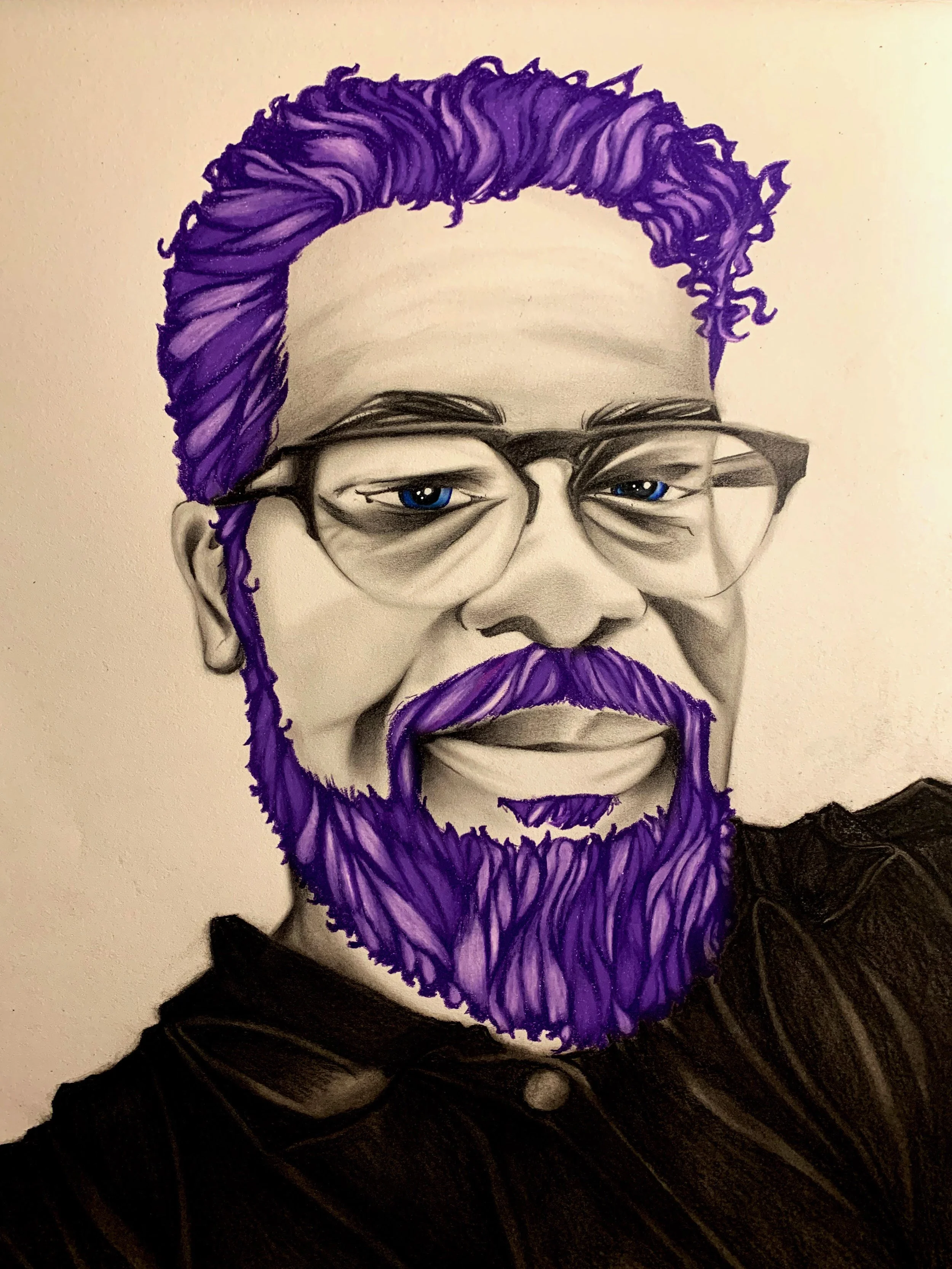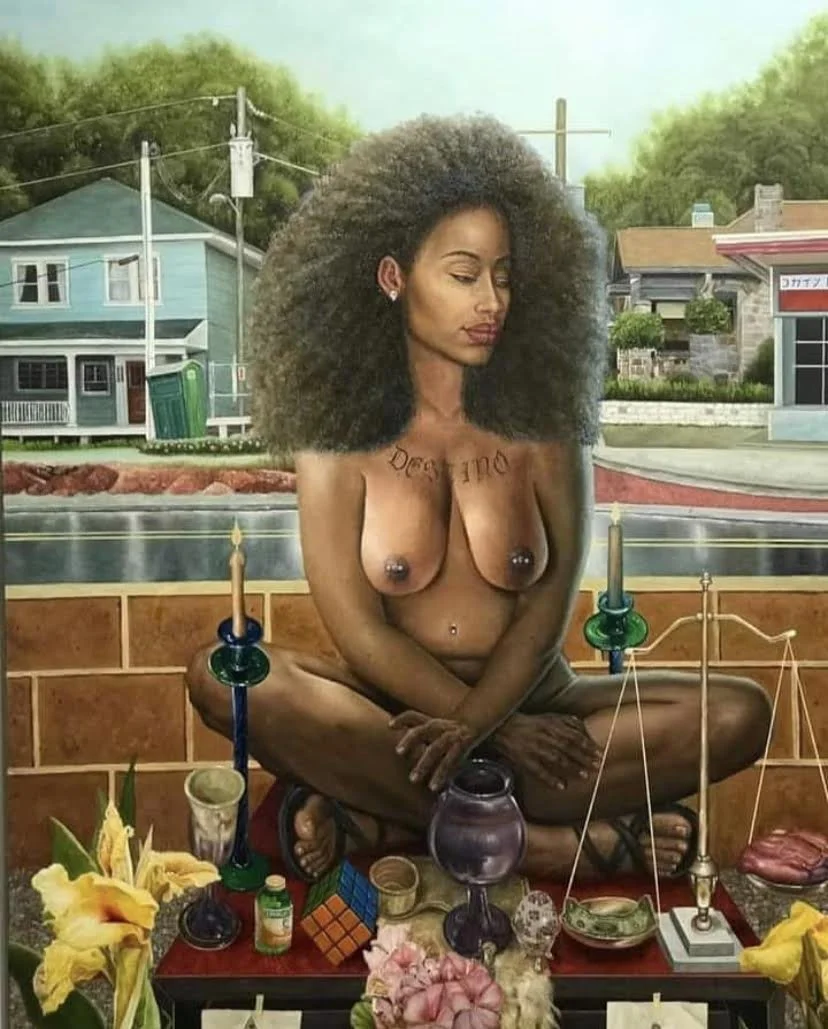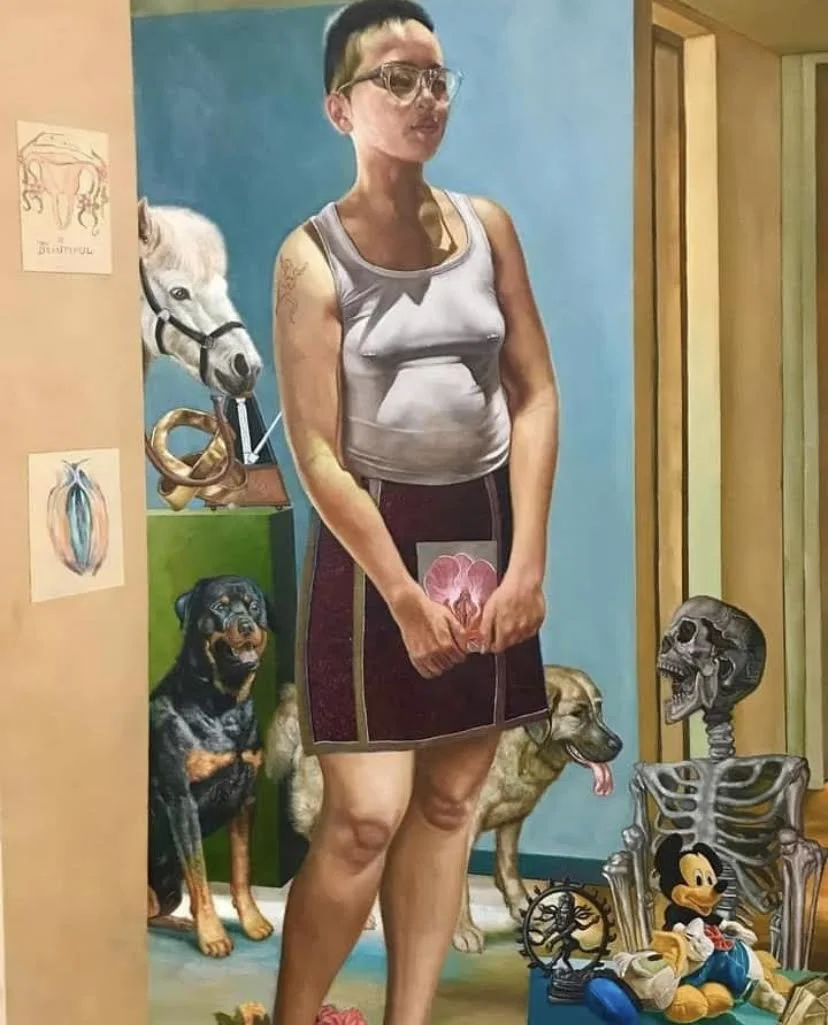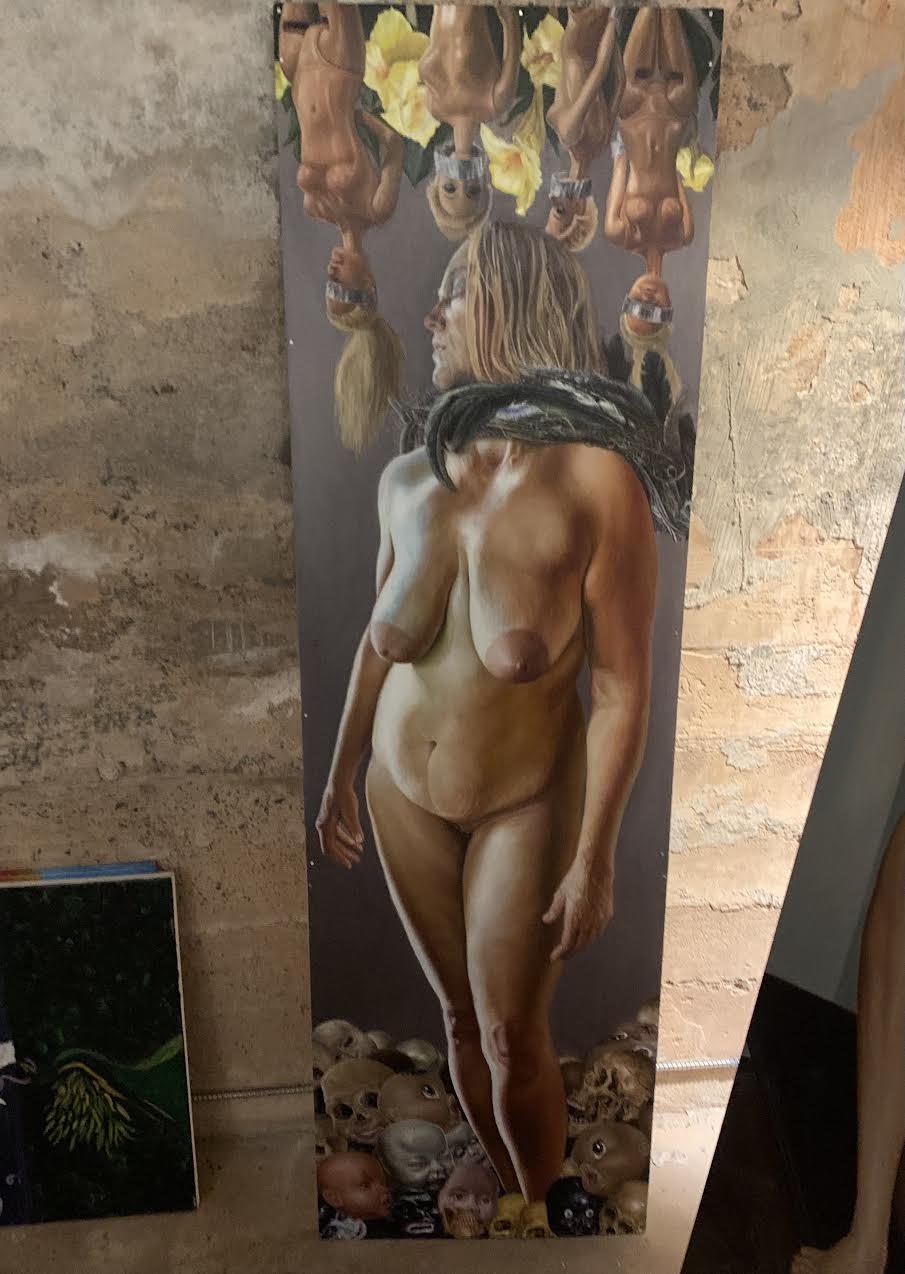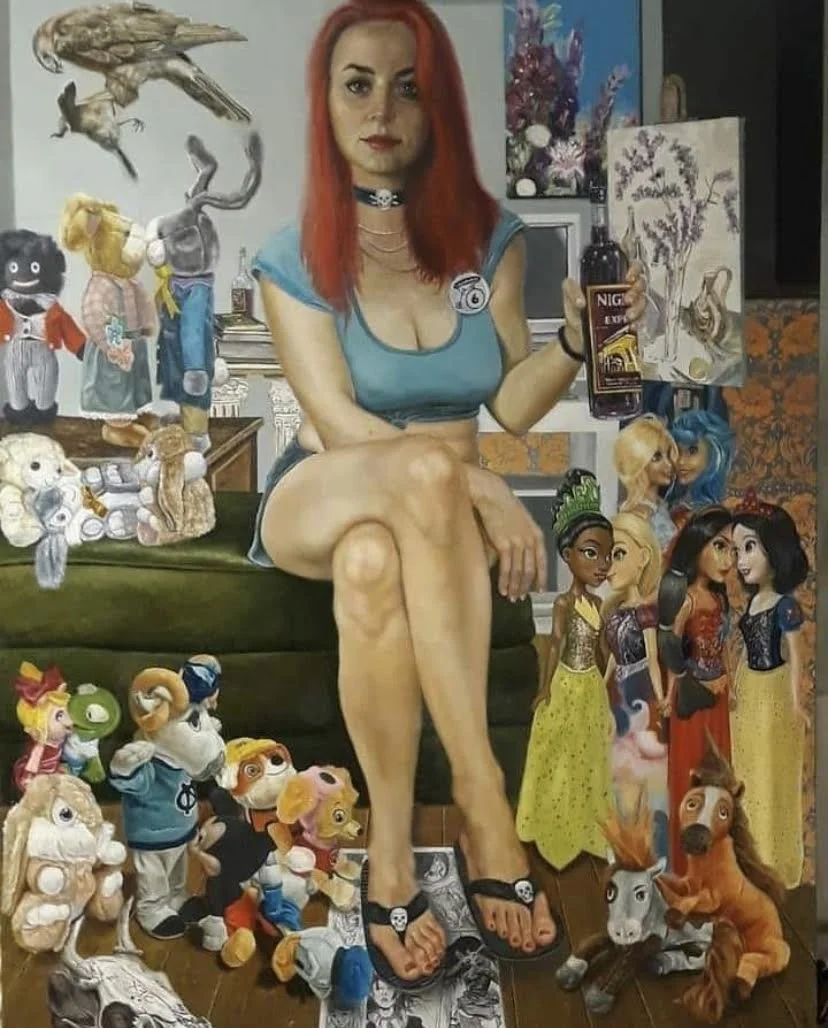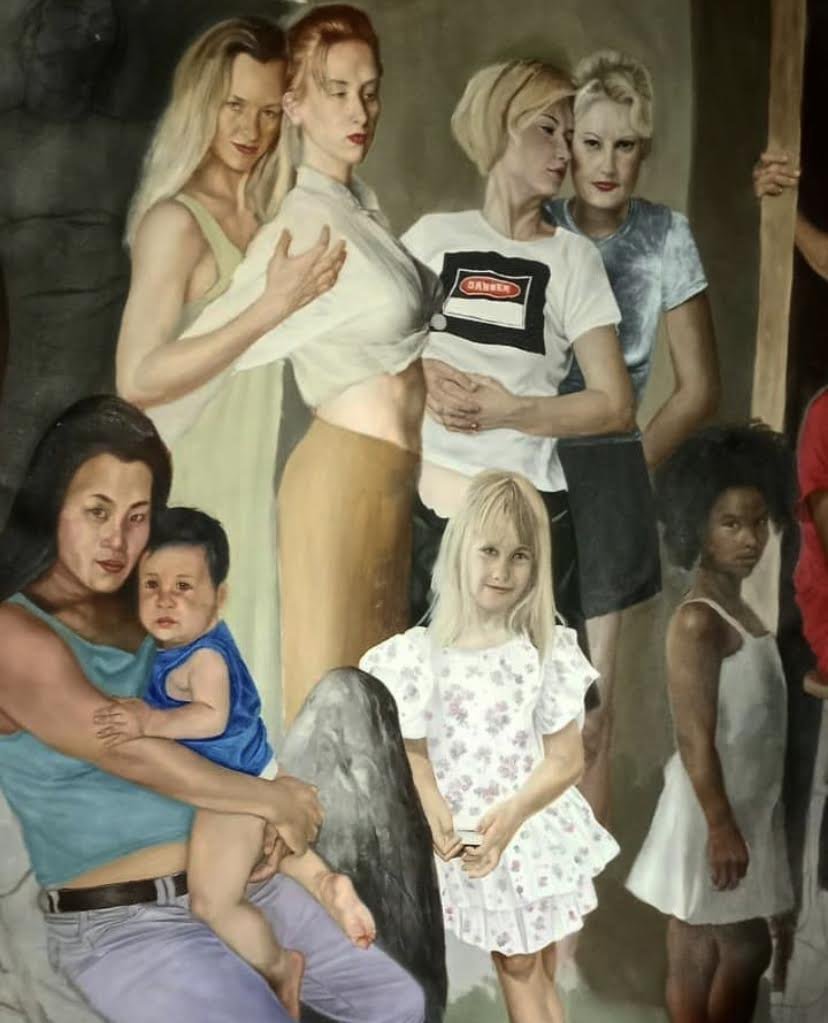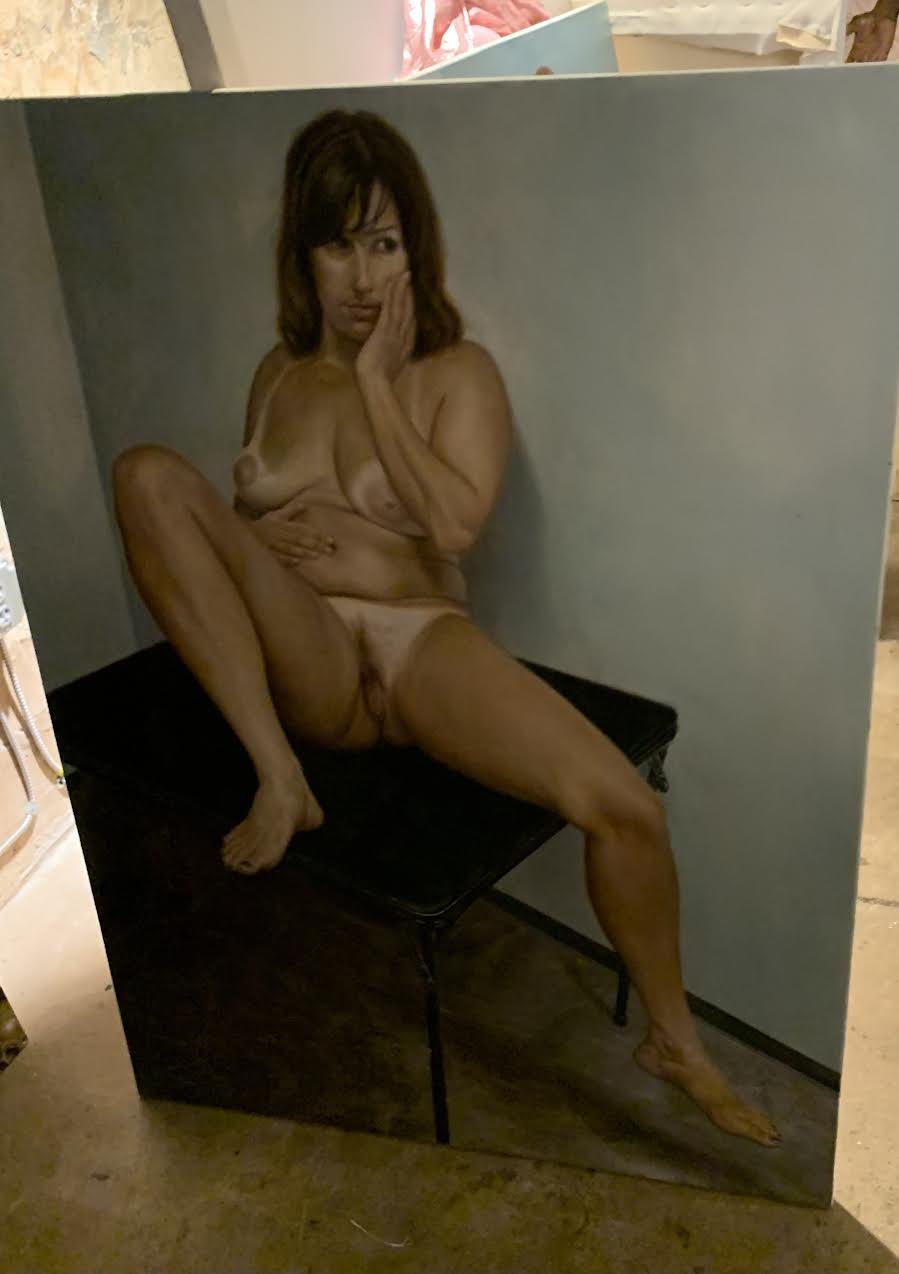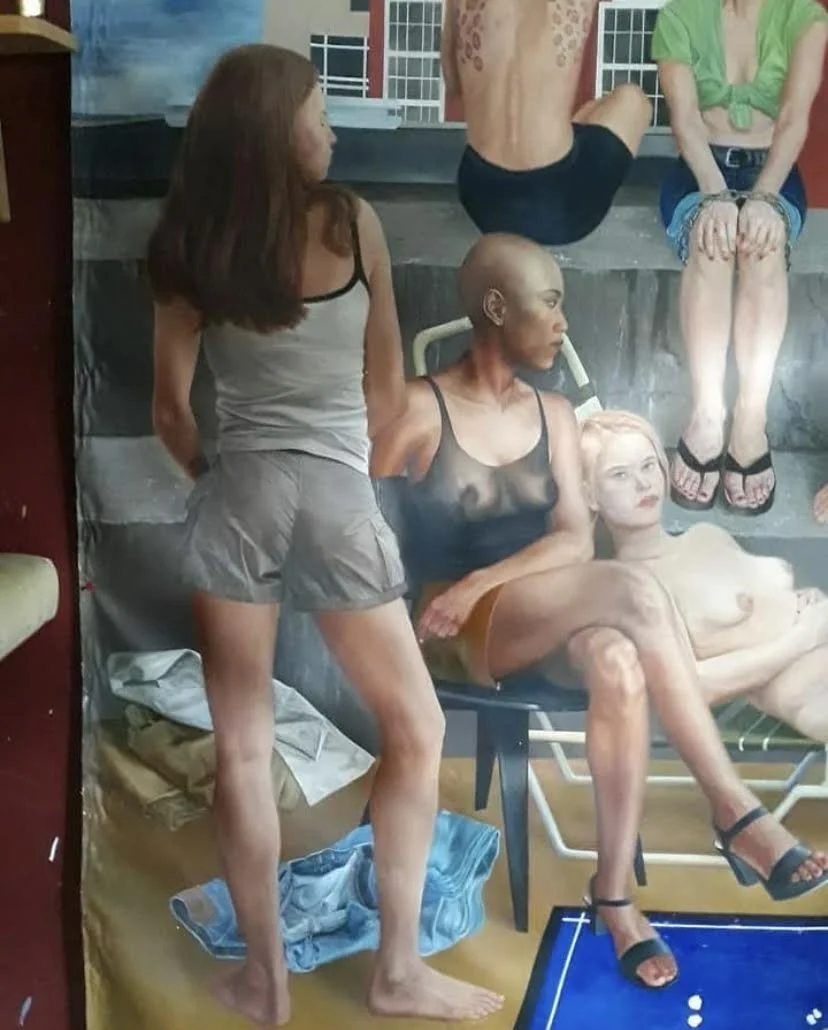Adam Narcross
Illustration by Yuri Jeter
Self-taught painter with degree in physics, Adam Narcross, lived in Japan for almost a decade, but today he calls Raleigh home. We asked him about his recent creative exploration, Anti-Madonna and , you know, life:
Why do you paint women?
Simply put, aesthetics.
In personal terms, the preference tends towards a preoccupation with appreciative admiration of the female form on 1. a psychological level. 2. There’s an appealing courage external to the "vanilla" or conventional archetypes, which too often characterize a one-dimensional archetype separating the experiences of women from the common familiarity of joint human relatedness, often in the name of political progressivism. 3. And moreover something extending in a direction of transcendence, that is, working with people who only happen to be women, rather than the gender as the subject of the many ideas, themes and philosophies of which, when examined within a context of art, factors gender distinctions only negligibly. The people who happen to be female within my paintings are not passive subjects, but rather active participants and contributors to the themes working through the visual language of symbols and ideas.
Who is Anti-Madonna?
Anti-Madonna is the anthropomorphized version of an unattainable, non-human ideal, of what embodied the spiritual and physically virtuous mother of the Dark Ages Messiah. When this medieval ideal is unchained from the remote cloud she was elevated to, for the sake maintaining the spiritual blackmail and never ending guilt and shame of human beings, and returned to being a human person, then (in the examples provided,) women can be the embodiment of their own virtue on a wide diversity of terms. As a human being the ideal is not defined through a narrow lens of subjective, often contradictory perfection. Motherhood, sensuality, rebellion, meditation on concepts like justice, celebrating intimate expression as art, elevation of life-affirming libido, intellectual inquiry into finding one's own defined joy within one's body, are all a kind of liberation that completely contrasts with "The Madonna.” This rehumanization is embodied in "Anti-Madonna."
What’s with the stuffed animals scattered through your art?
In Doll Holocaust, the many dolls is somewhat a critique on how our early youth is conditioned to impart parts of our personality onto what amounts to modern day fetish items. Voodoo dolls, effigies, puppets, down to Barbie and Princess dolls, are in a sense the gatekeepers of a precarious childhood. In some instances, they become the prison guard against adult experience. While simultaneously representing the casual nature of ruthless disposability, as the early adult discards them, or more dramatically, transfers the physical trauma from parents onto another object helpless to avoid physical abuse. As dolls can sometimes hold childhood memories hostage, so too in Doll Holocaust are the Barbies held hostage by a former child liberated from needing to pretend to be God as practice for being a parent. The paintings with which dolls are present truly require a brave collaborator in the model to observe deeply into themselves, and to share their experience and physical presence without reservation, to realize the visions. Of the other stuffed animals there is the iconography of commercializing childhood.
How is being a physicist reflected in your creative process?
So much of what embodies the preoccupation of physicists is trying to understand the fundamental structures of what contributes to existence itself. When I consider the processes of art, there is the endeavor to take the simplistic towards the complex and then to arrange that complexity into a form of communicative expression. Hopefully this leads to experiencing the art, beyond any safe harbor definition with linear words. Areas of Quantum physics pertain to the simultaneity of multiple states, wherein a subatomic particle can be both a wave and particle interchangeably within an equal present moment, until it is measured. I try to incorporate that within the paintings with varying degrees. For instance, rather than the painting having to be about a fixed value, like say, the painting "You can Die Having the Time of Your Life." being about only an obvious sexuality, it can also simultaneously be about what we choose to remember when confronted with two opposing symbols, the presence of a stuffed toy, playful friendships, common shared propensity for danger and on and on. Physics lends a great deal of insight into the fallacy of absolutist binary conclusions, and it seems to me thoughtful art attempts to articulate images absent of the same binary fallacies.
What do you want your audience to know?
That the models are amazing contributors and collaborators with most of the art they are seeing. That it’s alright to feel a multitude of emotions when attracted to different visual images. That art can be about sharing the experience of creative endeavor, rather than merely existing as a passive spectator. And moreover, how humbled and appreciative I am of their support, and the insights and perspectives they have given me these last few months of exhibiting.
Whose company do you like to keep?
Typically other artists, models, scientists, philosophers, writers, cinephiles and musicians. In many ways we inspire each other with creative energy. We challenge each other to confront our artistic limitations and exceed them so that we can evolve as artists, people and human beings with self-determining worth and value.
How can we buy your art?
My art is available for purchase through Narcross Arts at Golden Belt Artists Studios. I can also be DM’d on Instagram or reached at adamnarcross@aol.com

